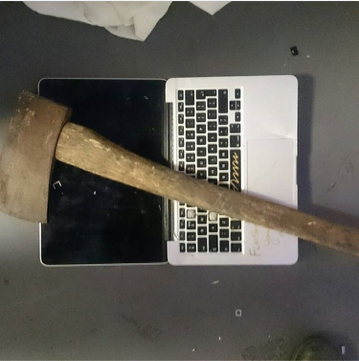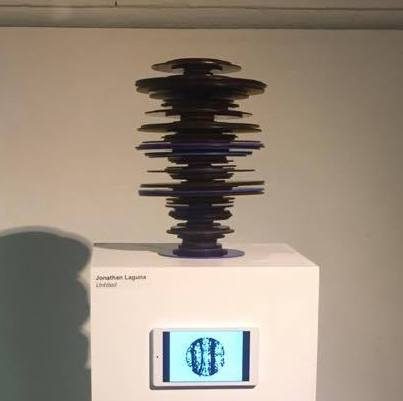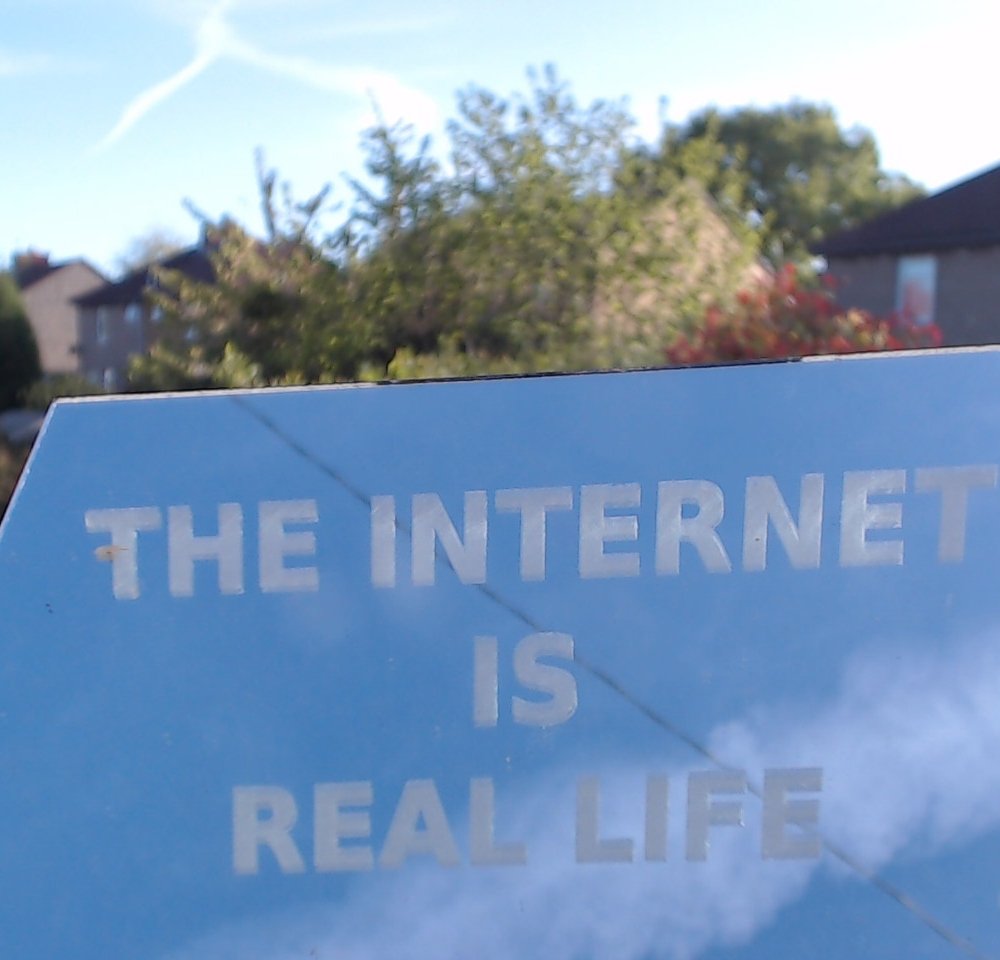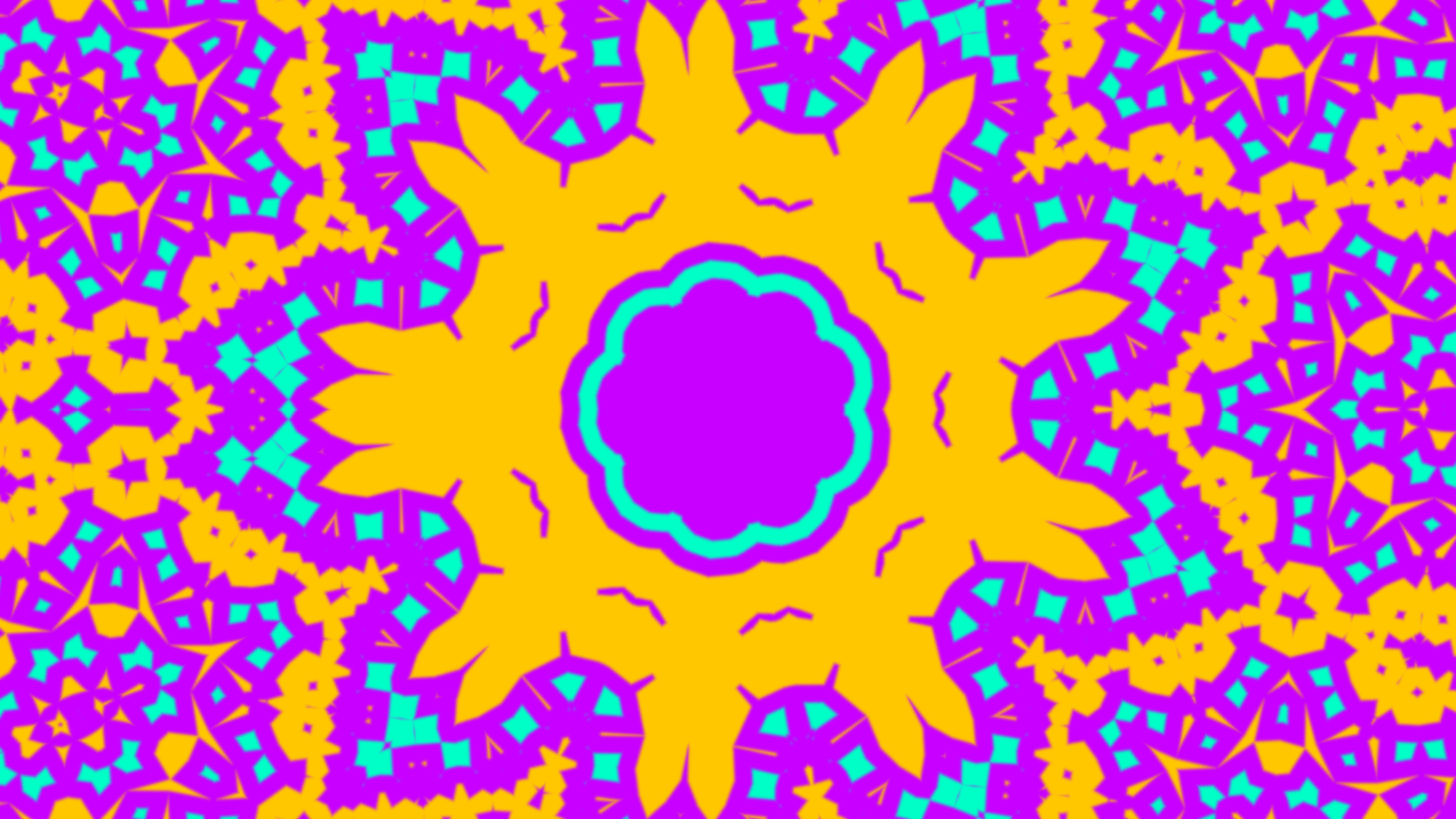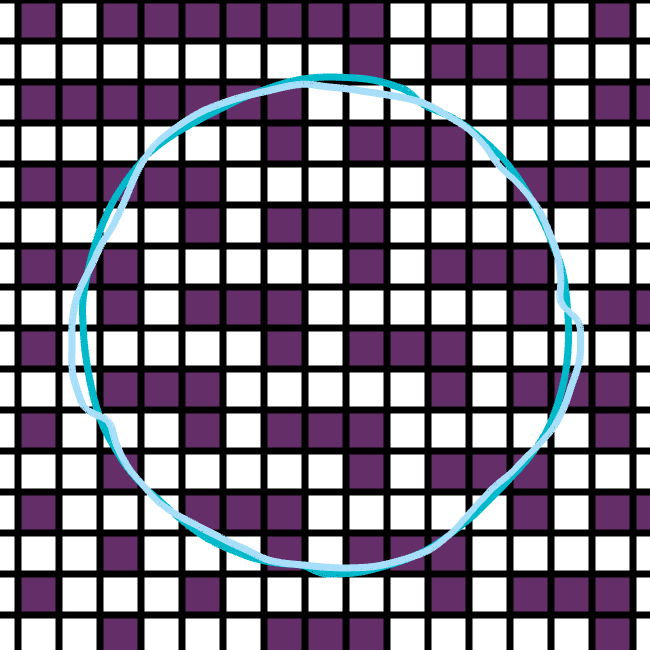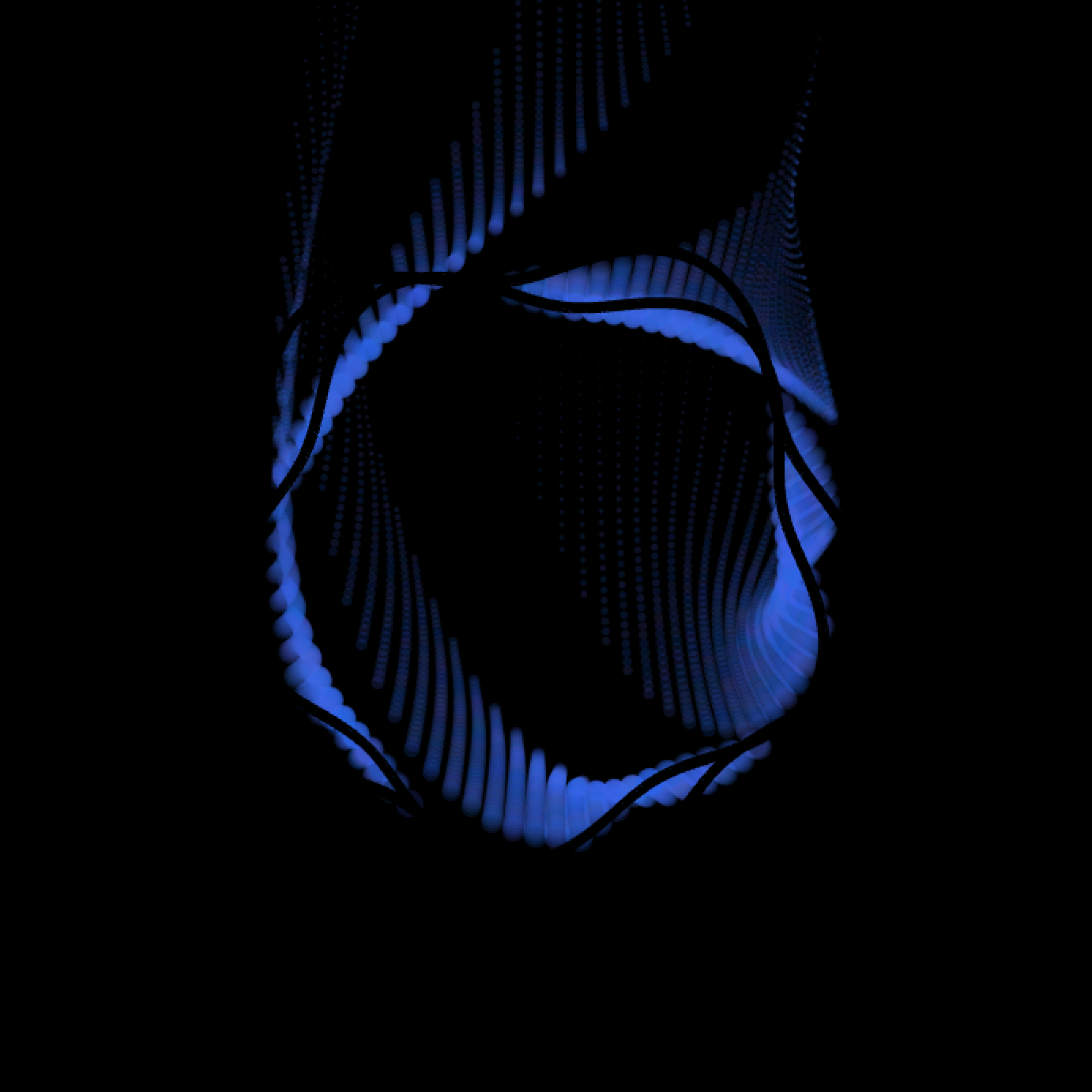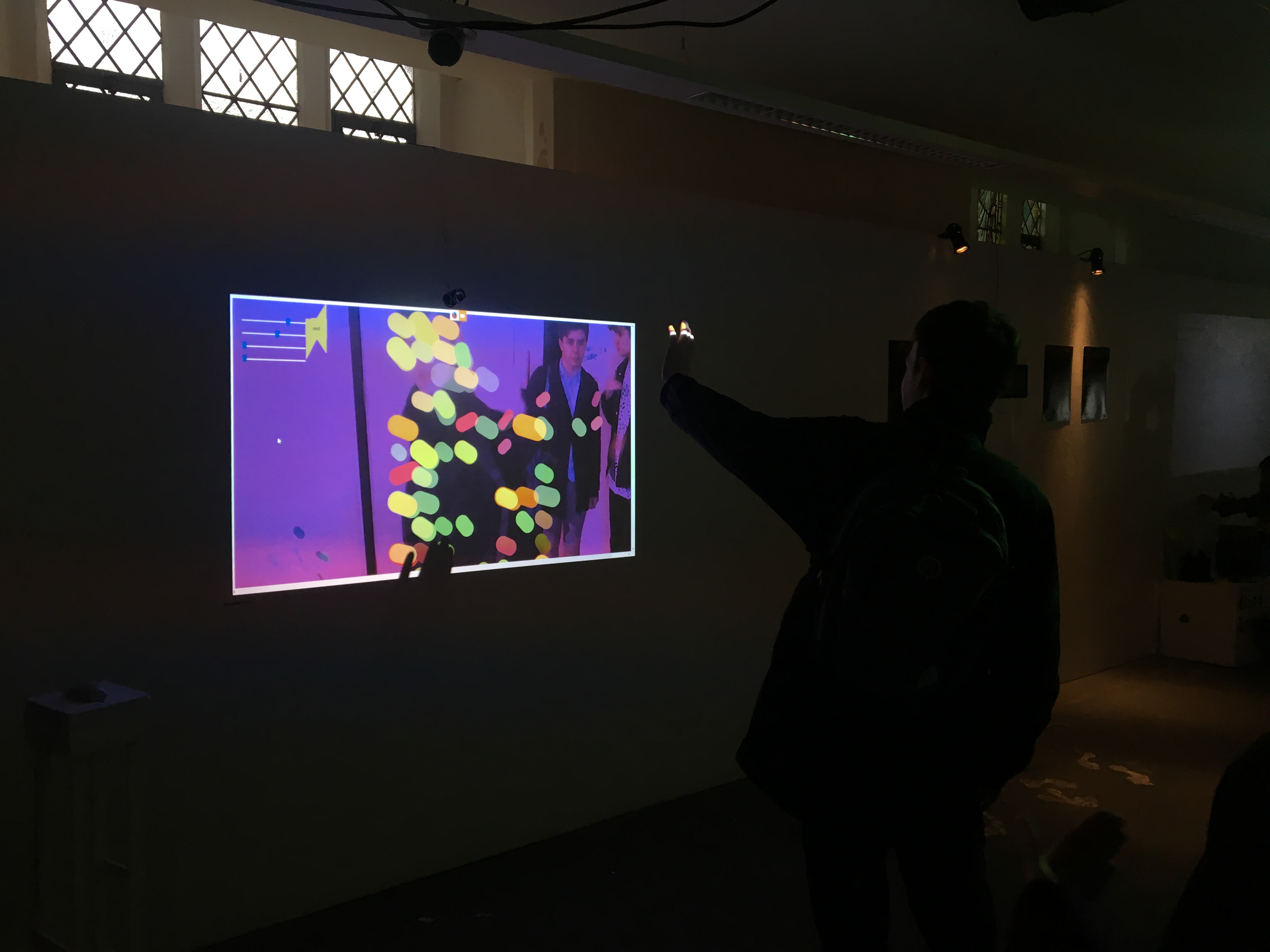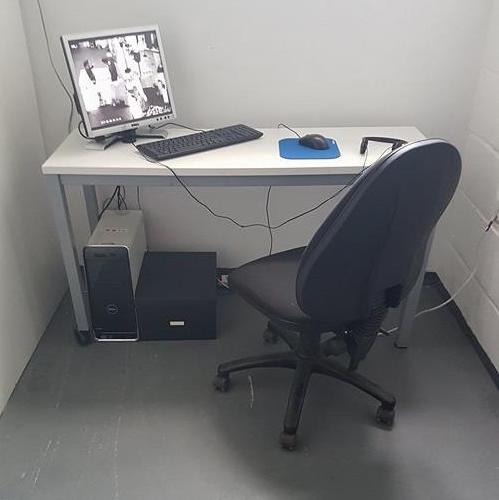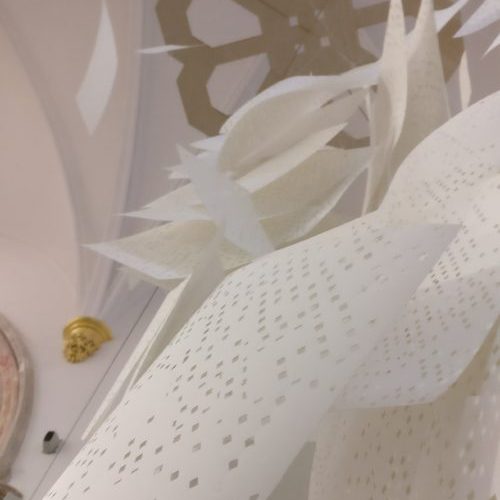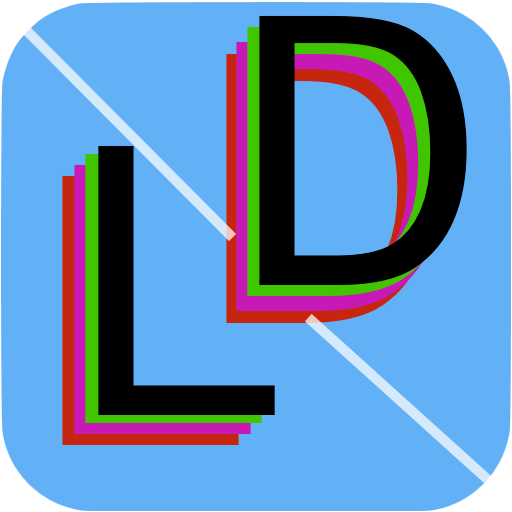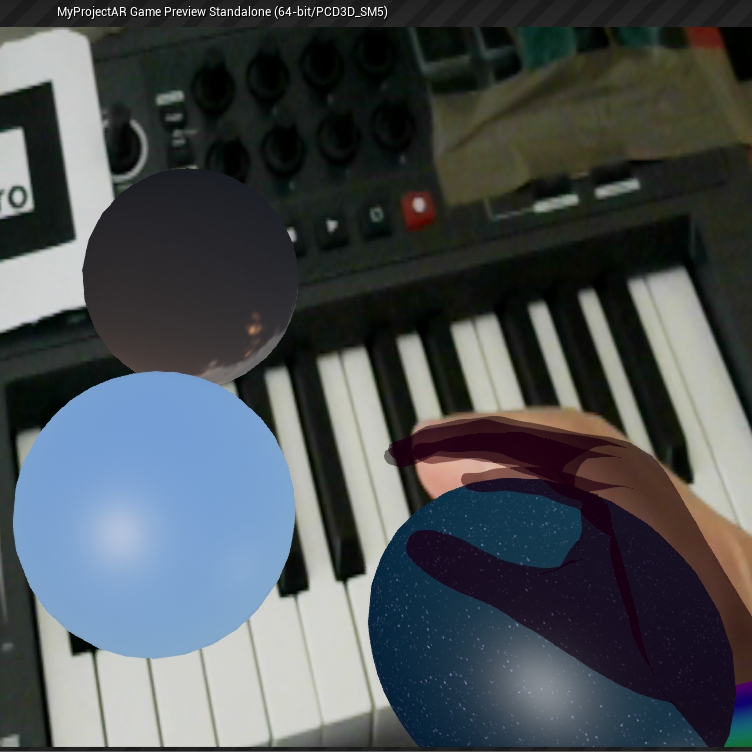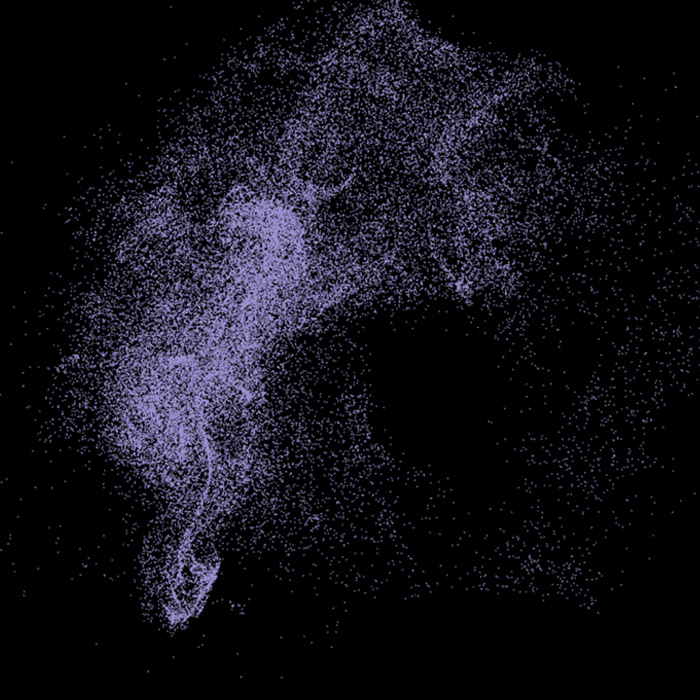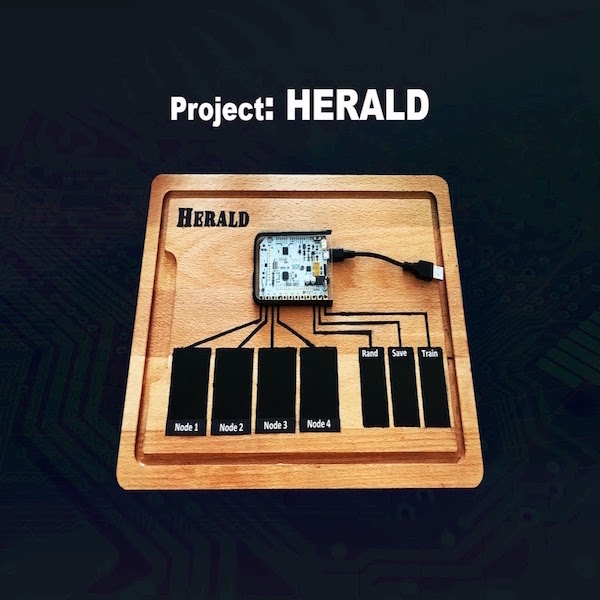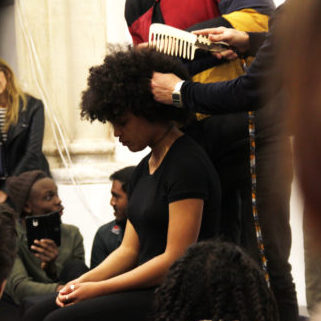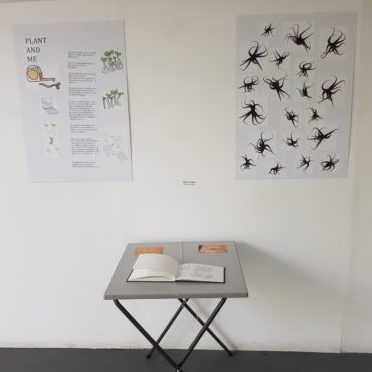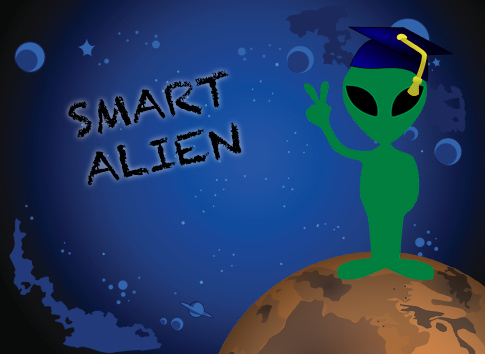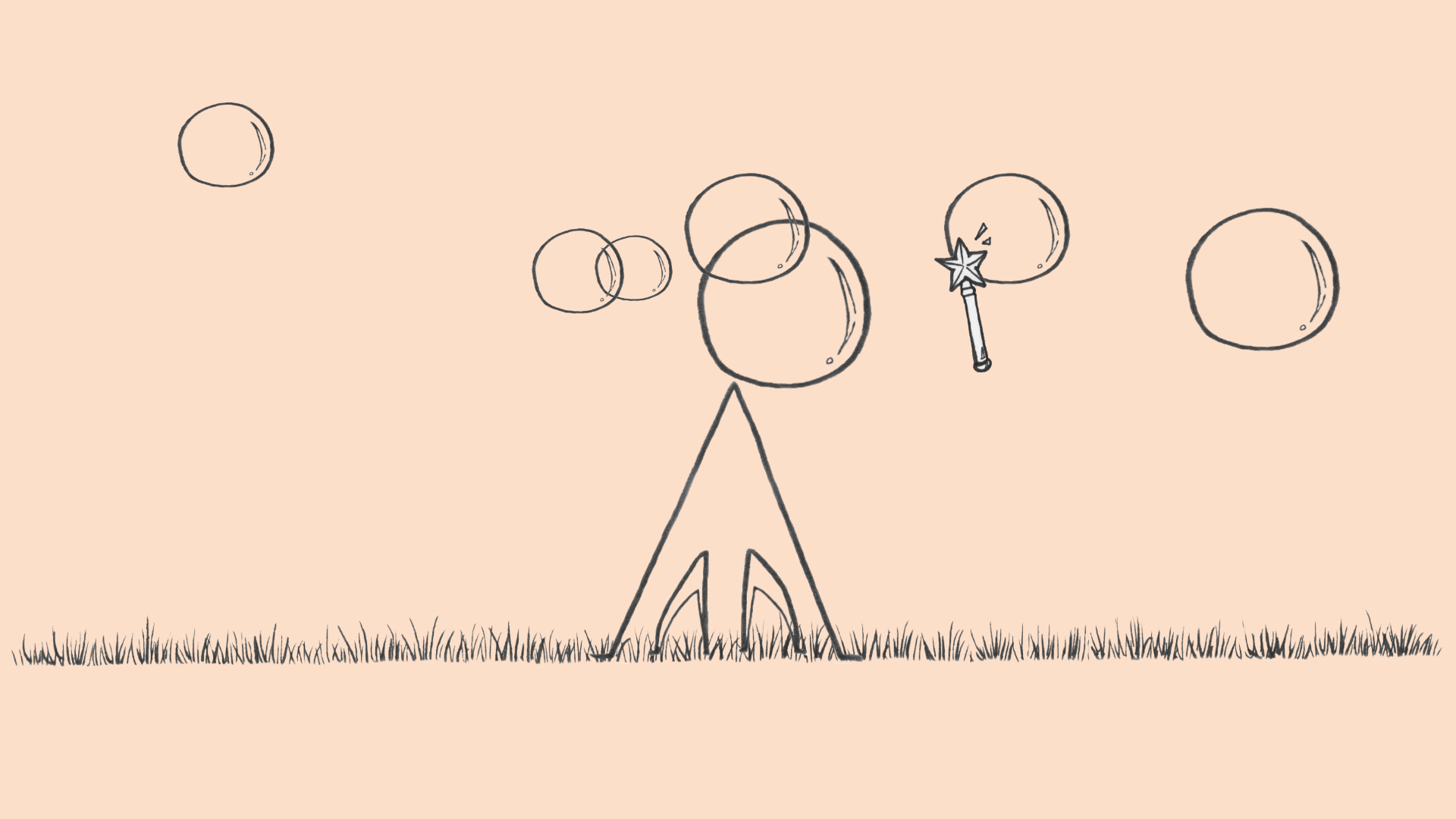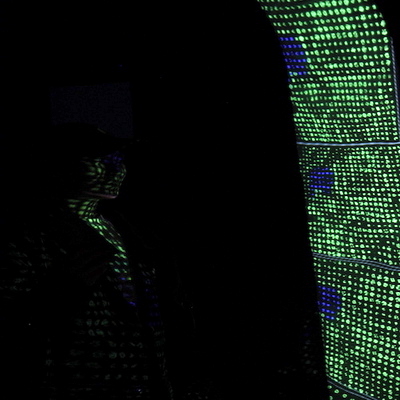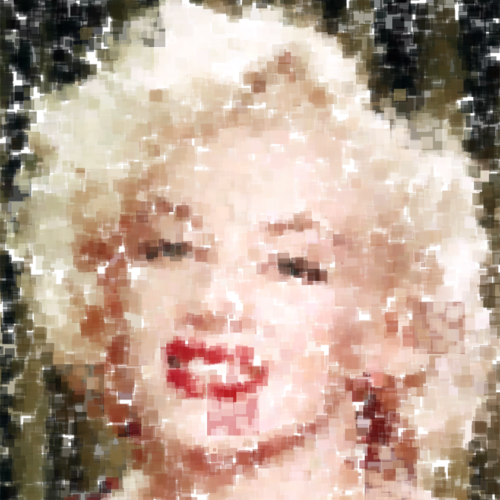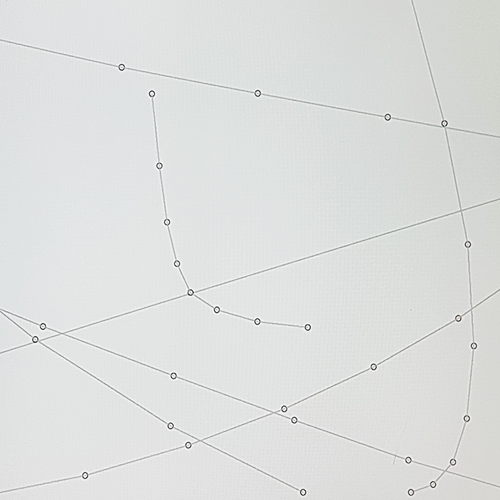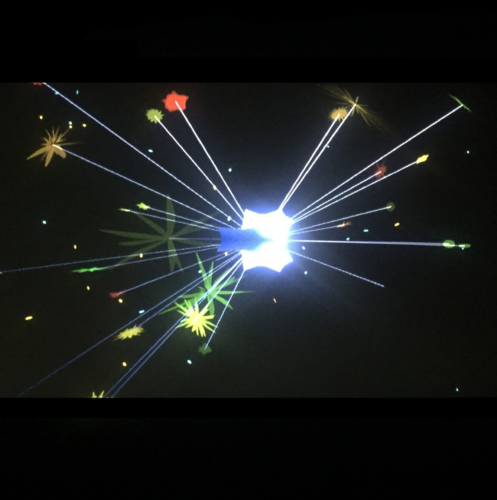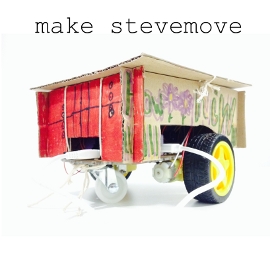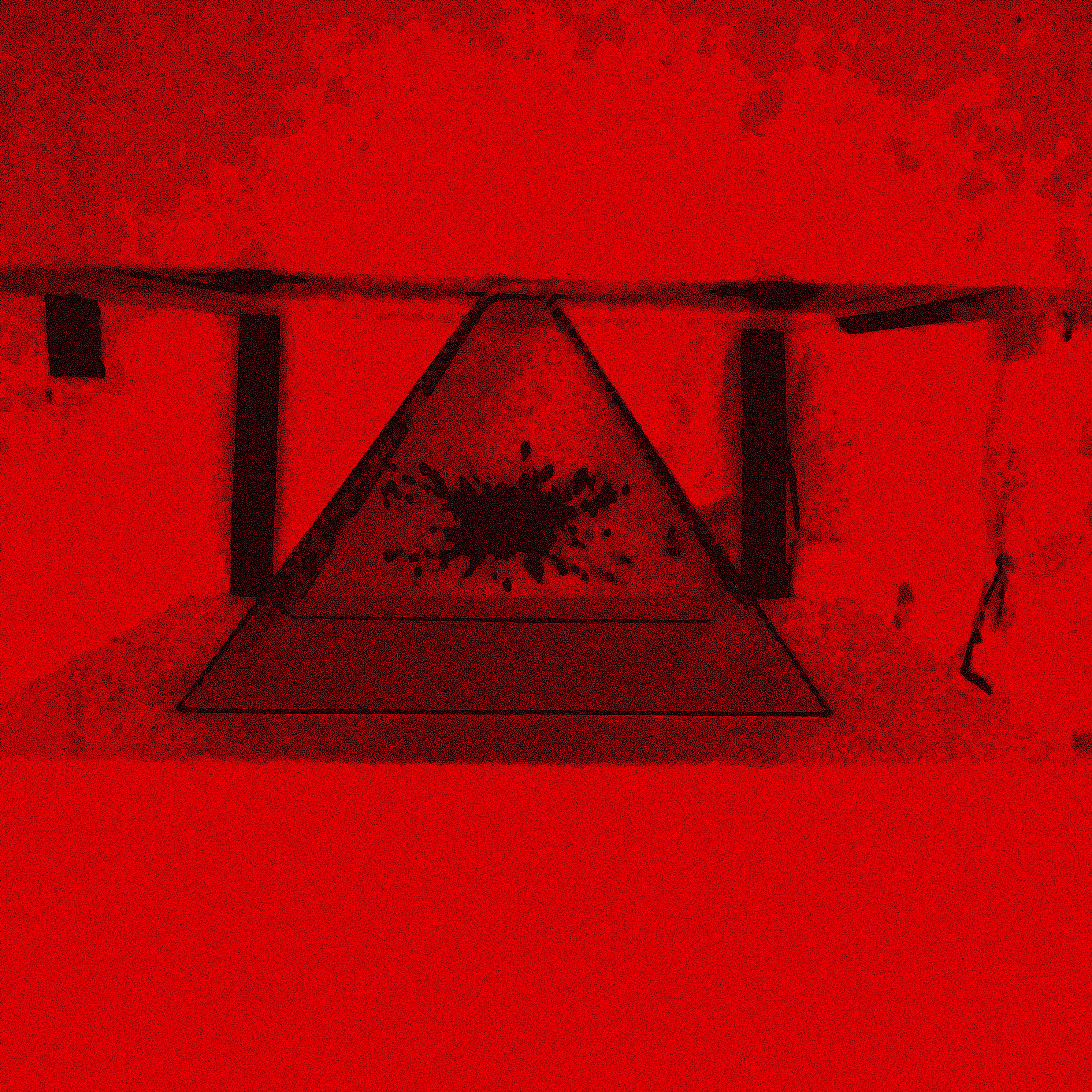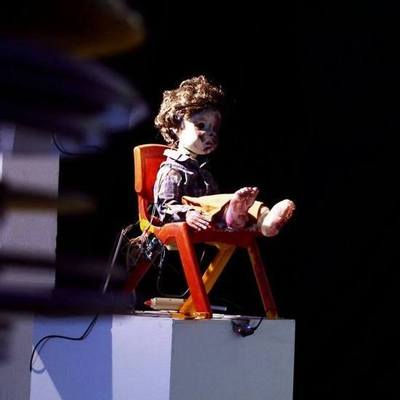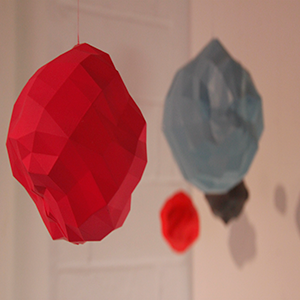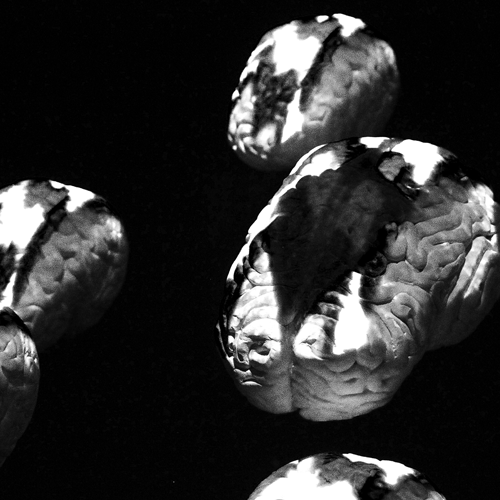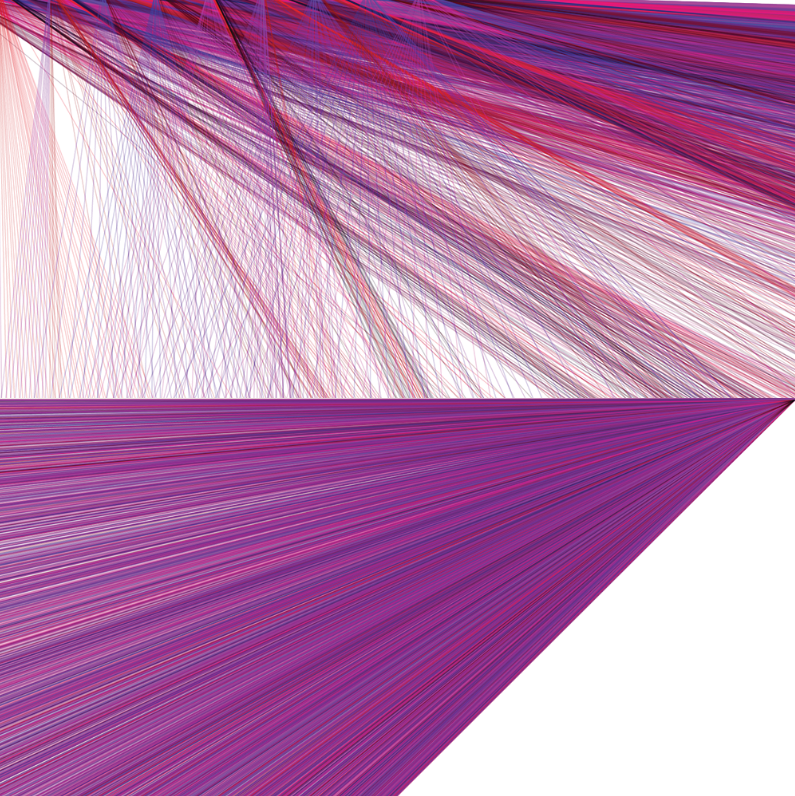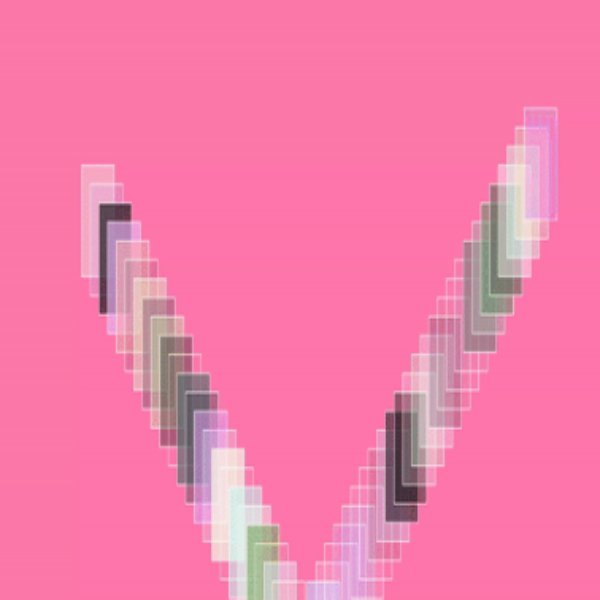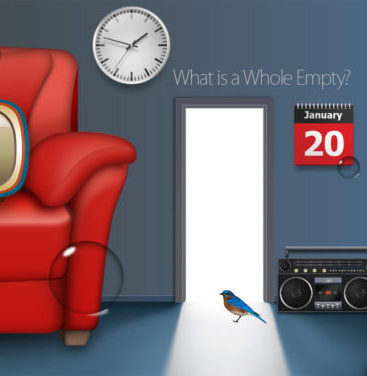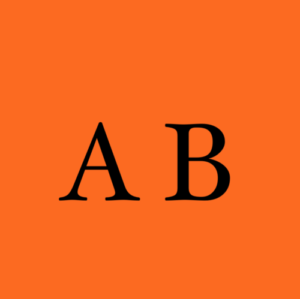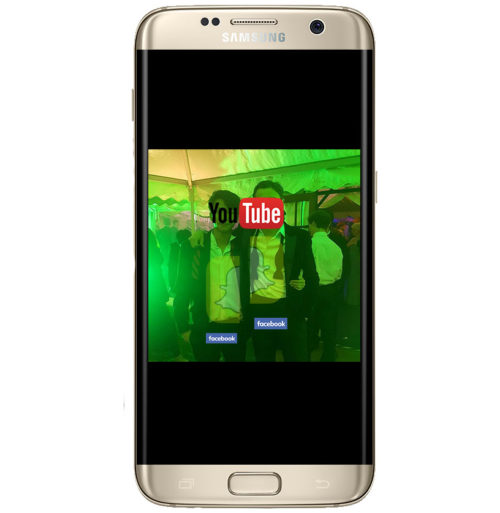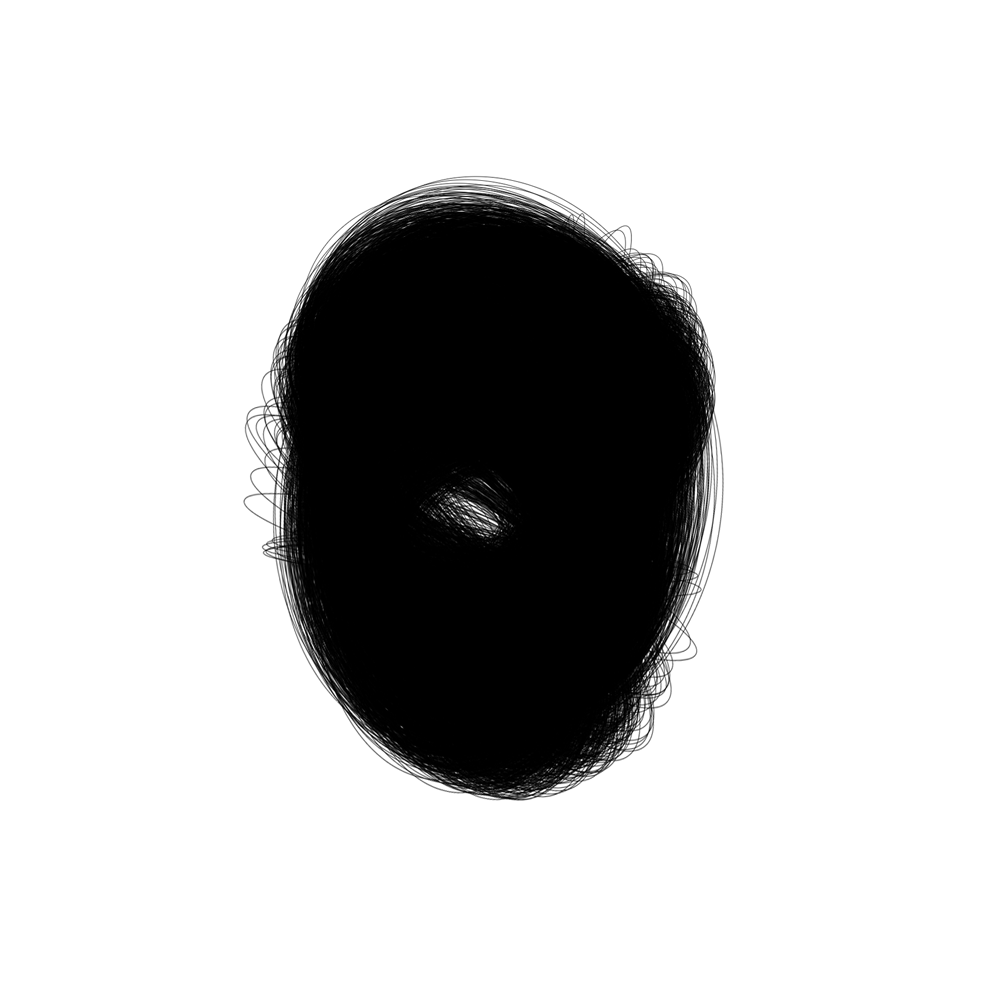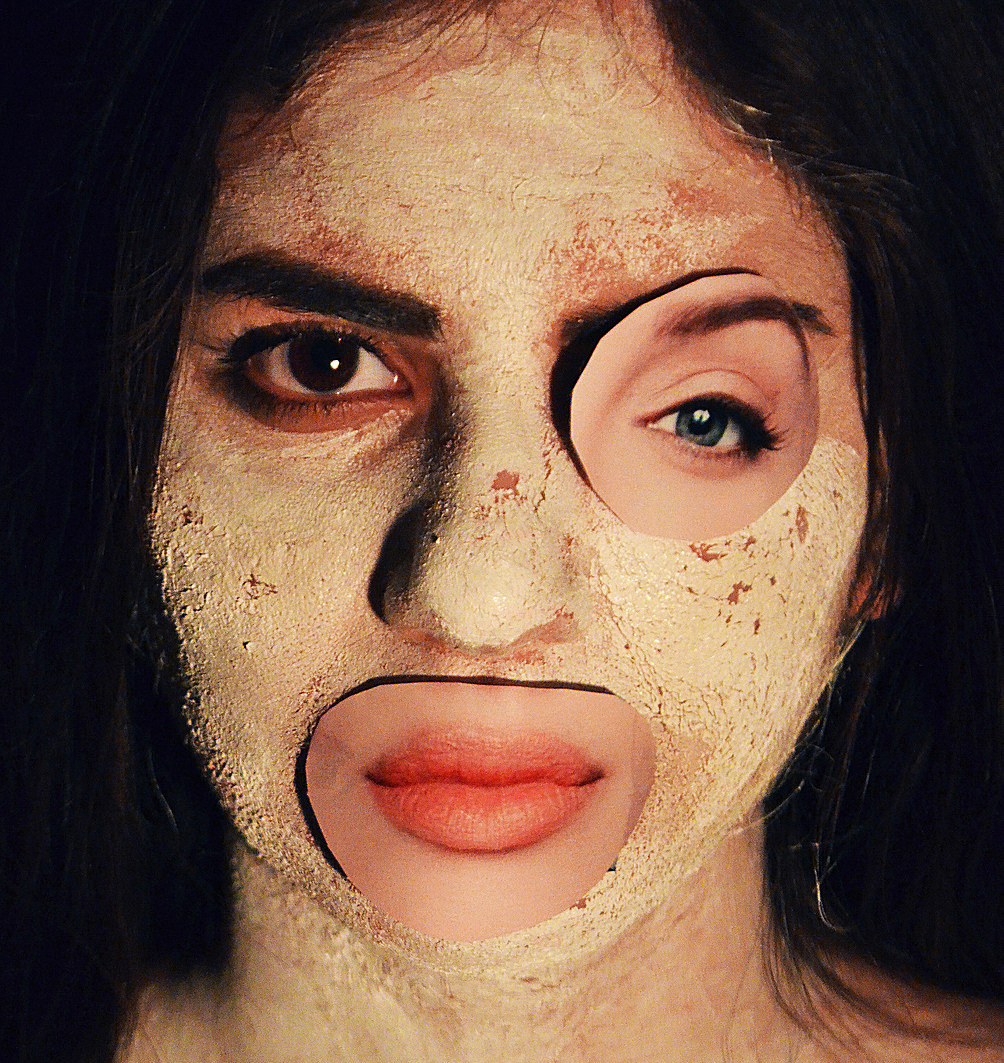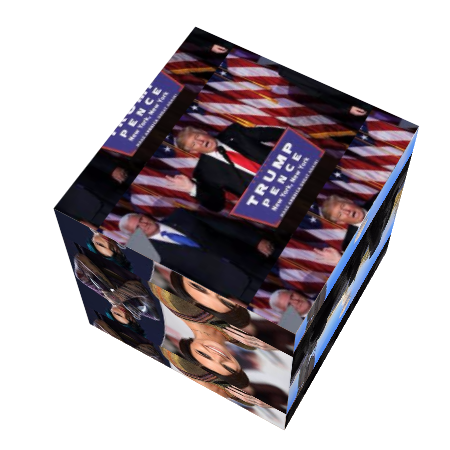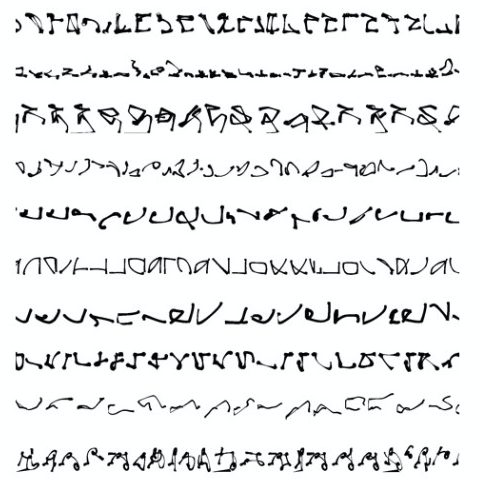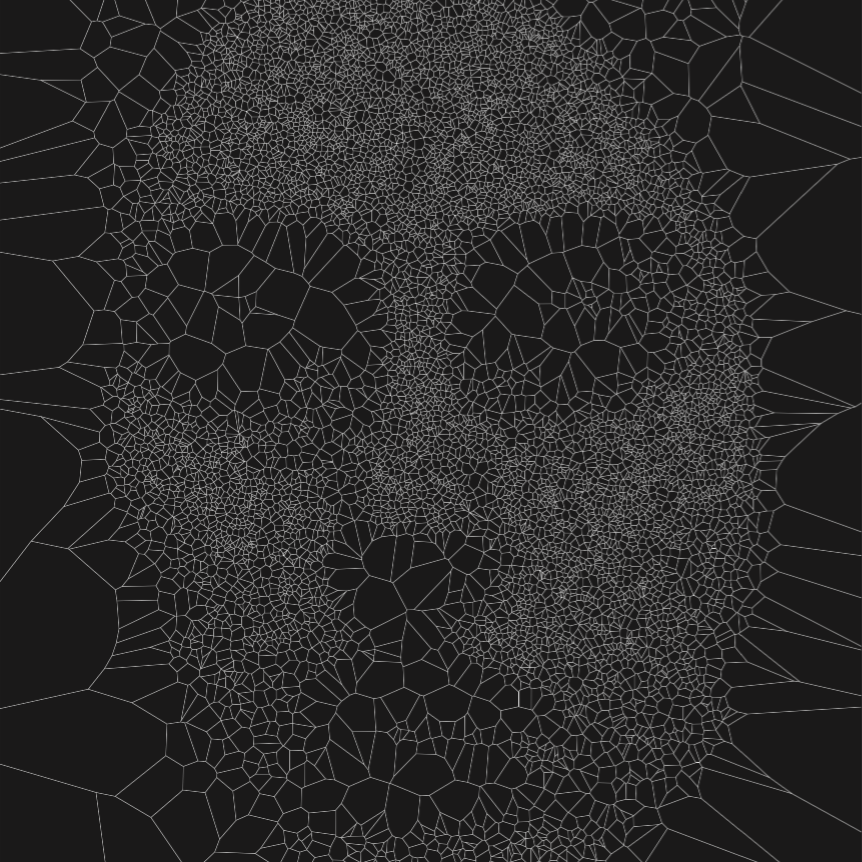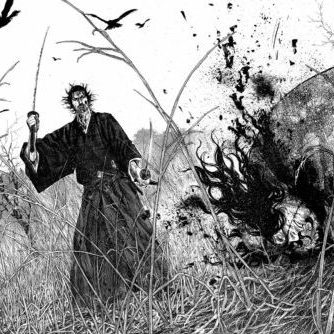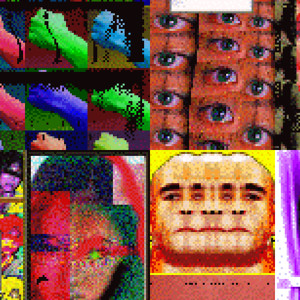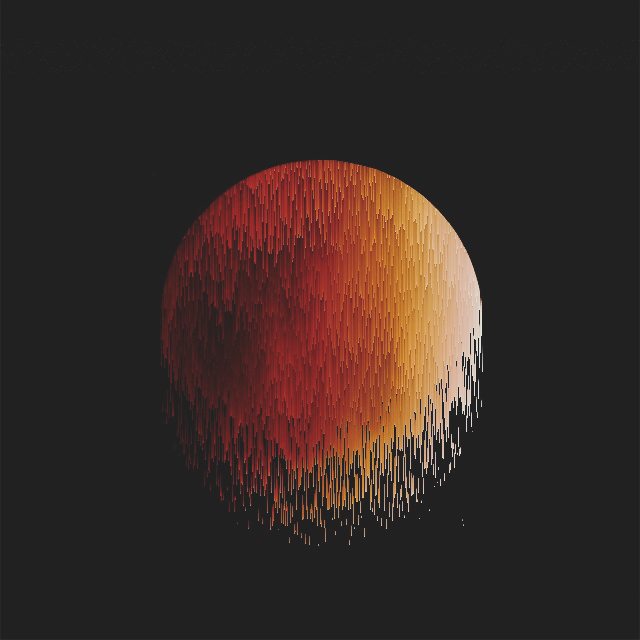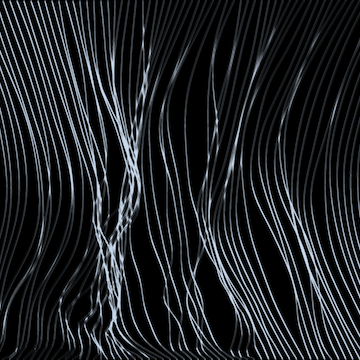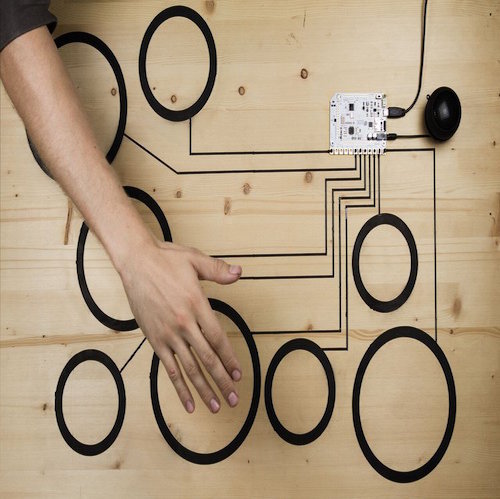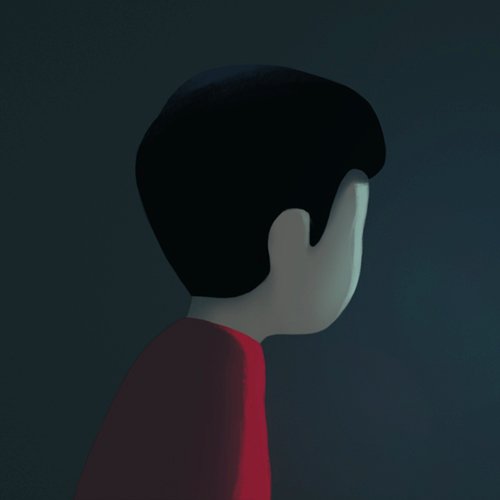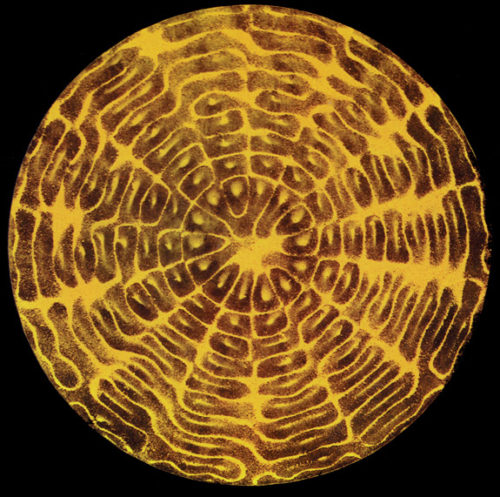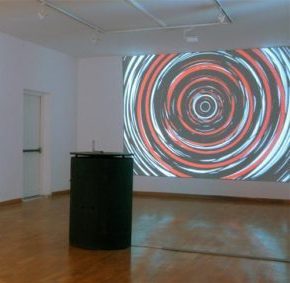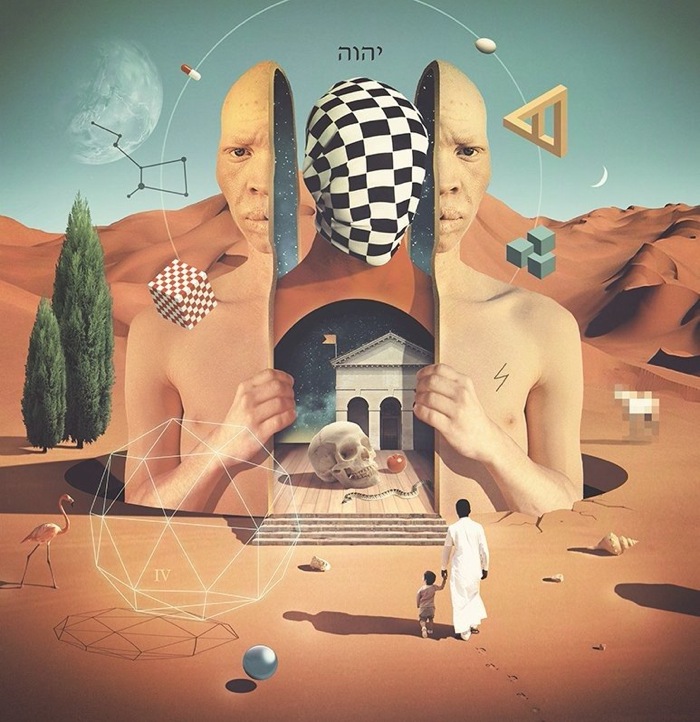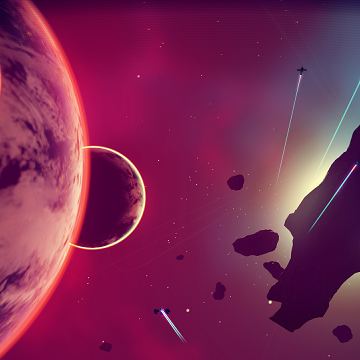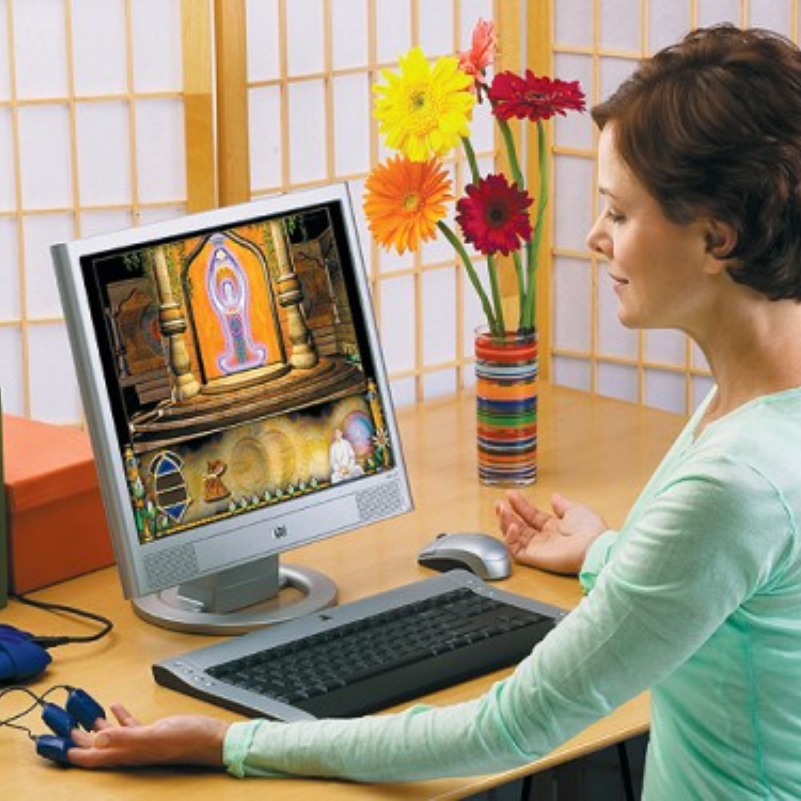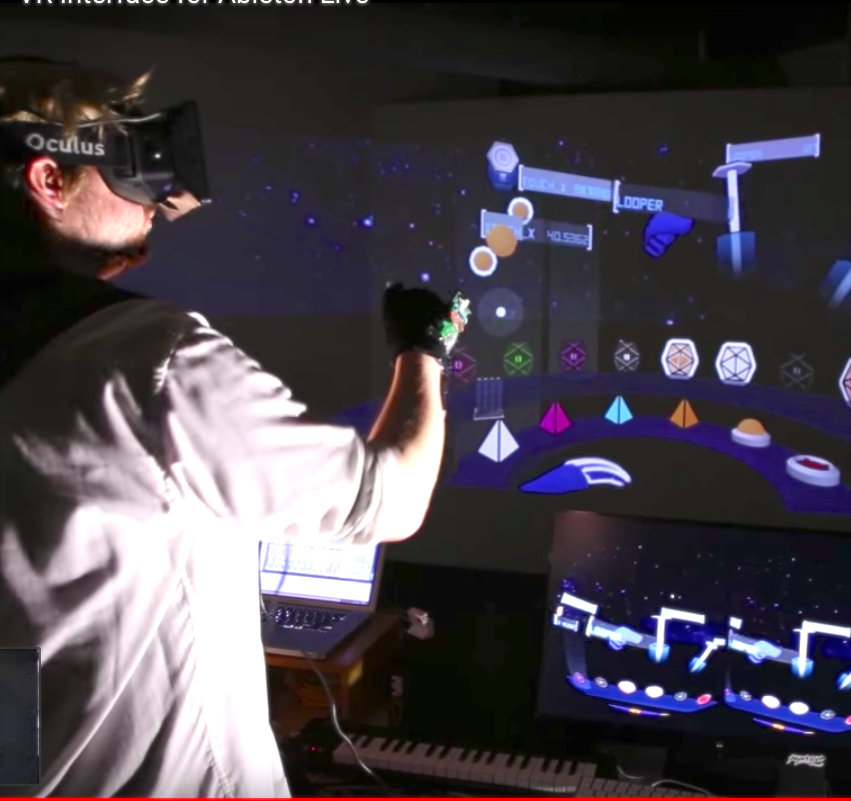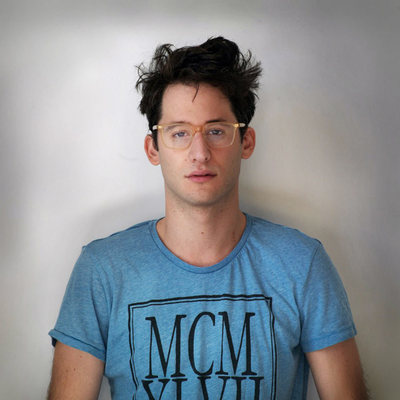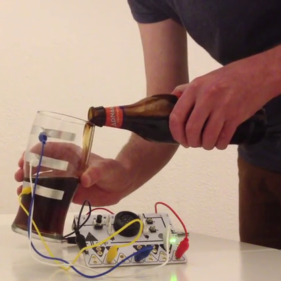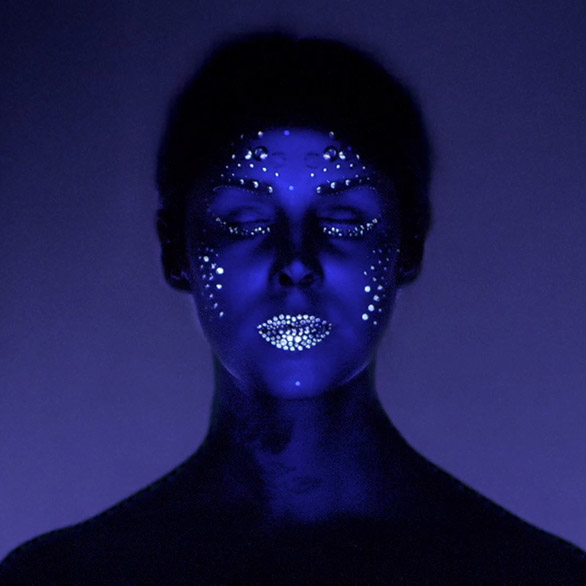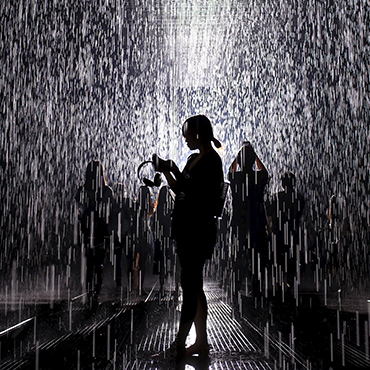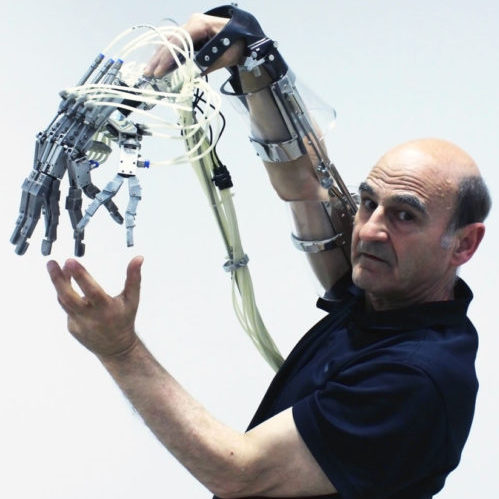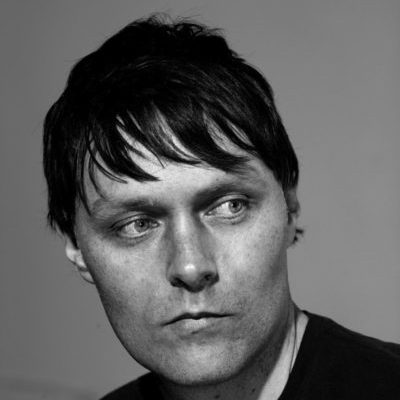Joseph Nechvatal
by: Lyndsey Jennings
Viractualism
Viractualism is a term created by artist Joseph Nechvatal in 1999 to explain a conceptual art theory, which means the interface between the biological and the technical. “The basis of the viractual conception is that virtual producing computer technology has become a noteworthy means for making and understanding contemporary art. This brings art to a place where one finds the merging of the computed (the virtual) with the uncomputed corporeal (the actual).”[1]
In order to bring these two elements together Nechvatal often creates animation and images depicting biological elements.The work then gets put through a series of adaptations involving a man made computer virus, which etches away and changes the image. The final output is then painted onto a canvas using acrylic paint by means of a robot. As well as bringing elements of biology and technology together it also comments on the idea of traditional art media being replicated by mechanical means. Nechvatal's work stretches to many fields, including music, computer coding and writing. He is also a researcher, who looks into the possibilities of using viruses to produce chaotic elements into an image.
To create the works in bOdy pandemOnium, Nechvatal used a custom virus program created by Sikora in the C++ programming language. Sikora's virus invades, destroys, and transforms Nechvatal's painterly images, which are based on intimate parts of the body. The images were initially taken from online medical images. The painting frOnt windOw retinal autOmat displays the eye and rectum, which represent the highest and the lowest orifices of the human body.[1]
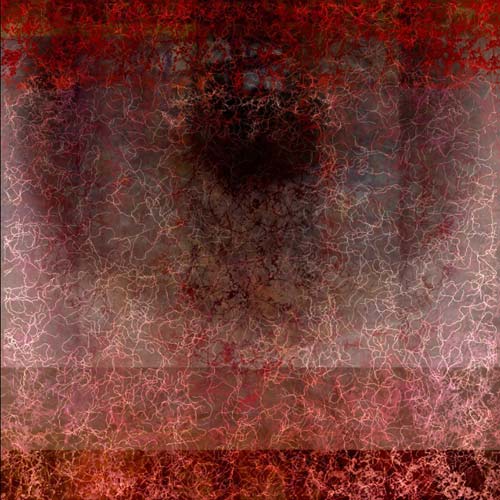

J. Nechvatal, frOnt windOw retinal autOmata, 2012, Computer-Robot produced 'panting', 2x2m
“My digital paintings conjure up an enigmatic world that signals the dynamic critical intricacy of a contemporary practice engaged in the fragile wedding of image production and image resistance. Through my use of intimate human body parts under pressure from software, I hope to bring a subversive reading to computational media by presenting an artistic consciousness of the body that articulates concerns regarding surveillance, encryption, safety, privacy, identity and objectivity.”[2]
Viral project
What very much started Nechvatal on his journey of researching viruses was that of the AID'S virus in the early 80's . He wanted to overcome his fear and so became fascinated by viruses. In order for Nechvatal to use the concept of a virus within his works he thinks of the image as a host for the virus to spread [2]. He started his first computer virus project painting in 1991.
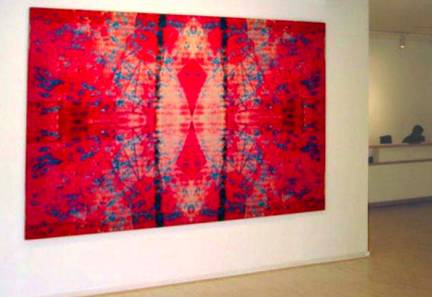

viral attaque: the conquest Of the horrible 1993
Viral attaque was the first work that used the virus algorithm. The blue patterns within the work are the product of the virus attacking the image. This work in the output of a painting is a way for Nechvatal to realise the work and bring it out of the virtual and back into the visceral.
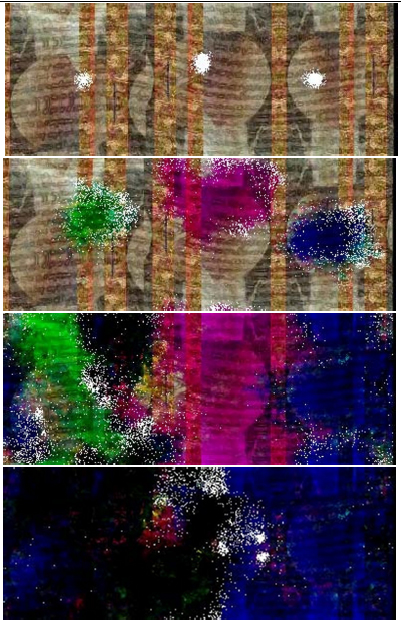

Computer virus project 2, 2001, animated stills
Computer virus project 2 began in 2001 in collaboration with author Stephane Sikora. This next stage in the virus project focused more on the virus acting like a artificial life simulation. Within the simulation the virus spreads by consuming all the colours contained within the image. After all the colour is gone the image ultimately demises and turns to black. Like viruses behave in the natural world, it exists upon the host and reproduces until the host ceases to exist.
Nechvatal further went into sound development that played a large role in his 2010 exhibition entitled Art rétinal revisité: histoire de l’oeil in paris at Galerie Richard. In there sound was synthesised in real time , alongside animations and paintings.[3]
Cybism
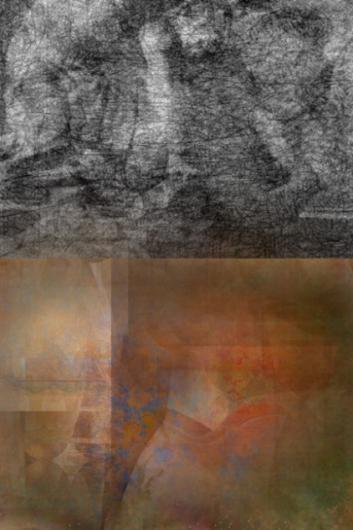

Becoming more cybist 2012
Nechvatal also coined the term cybism in 2003 and is essentially a sub-diversion of viractuality. It tries to engage with certain aspects of technology, science and conciousness. He wanted to create this art theory because “a scientific spirituality has never been sought after in art” and that 'the exploration by art of the more than human reality must combine the biological with the technical' [4].In a sense connecting everything within a rhizomatic structure. In a 2012 interview Nechvatal talked about cybism and how we live in a technological age where information spreads fast and acts in this rhizomatic structure or even spreads in the form of a virus [5]. Cybists are looking to find new technologies to represent art while still having a connection with that tradition. The term also relies on the blending between the analog and the virtual or the biological and the technical. To transcend into this space of cybism cybists must think beyond our view of our own natural and genetic perception of ourselves so that we can reach this true technological enlightenment.[6]
Immersion into noise
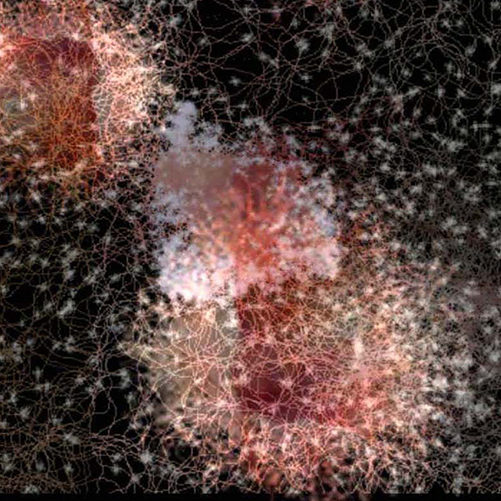

asstrOnOmical affected autOmata, 2011, 44 x 66”, computer-robotic assisted acrylic on canvas
In 2011 Nechvatal published a book entitled immersion into noise. This book is a conceptual handbook on the visualisation of noise. In a sense being networked art noises, including sound. This noise can then become the material for an immersive art that leaves the viewer in a state of both connectivity and dis-connectivity where the networks of the body will merge with these art noises to become drawn into a state of hyper connectivity. In this state the lines between the the inside world and the outside become blurred, making us self reflect on our self understanding. Nechvatal also comments that this immersion of art noise allows us to push the limits of our habitual significances.[7]
Significance to my work
Currently I am looking into the comparisons between biological and computer viruses. That materially they are contradictory to each other but might perhaps be the most similar shared experience that sentient beings have with machines.
I find Nechvatal combines the elements of biology and computer viruses very effectively and produces something that is both aesthetically interesting and conceptually sound. As well as comparing the two I want to take the idea further and research into the possibility that biological and computer viruses are transferrable. For example if a person had an electrical device within them(for medical reasons or otherwise) and it had the ability to connect with other devices, could it potentially catch a virus and transfer it to the user? Researchers have said that its not beyond the realm of impossibility so I would like to look up this idea further. This would mean the merging of the mechanical with the biological, which touches on the idea of the cyborg and will also relate back to Nechvatal's cybism art concept through the ability to transcend and push the boundaries of our natural limitations. From my research perspective I will also be looking into this concept to explore the effects that not only could a computer virus pose to us biologically but also its affect on our minds and possibly our spiritual experiences.
As was mentioned earlier with Nechvatal's work, he likes to adapt the animations he creates for the purpose of turning them into paintings, which can then bring the realisation of the concept into the physical. In regards to what I want my work to look like aesthetically I want to explore 3D sculpture to realise this concept as well. I would also like to use animations for the possibility of projections and then display the two together to complete the narrative of the work. Since many of Nechvatal's work is still images that were initially captured by a form of generative animation, they are very helpful as reference points that contain both the sort of aesthetic and concept that I want to explore.


